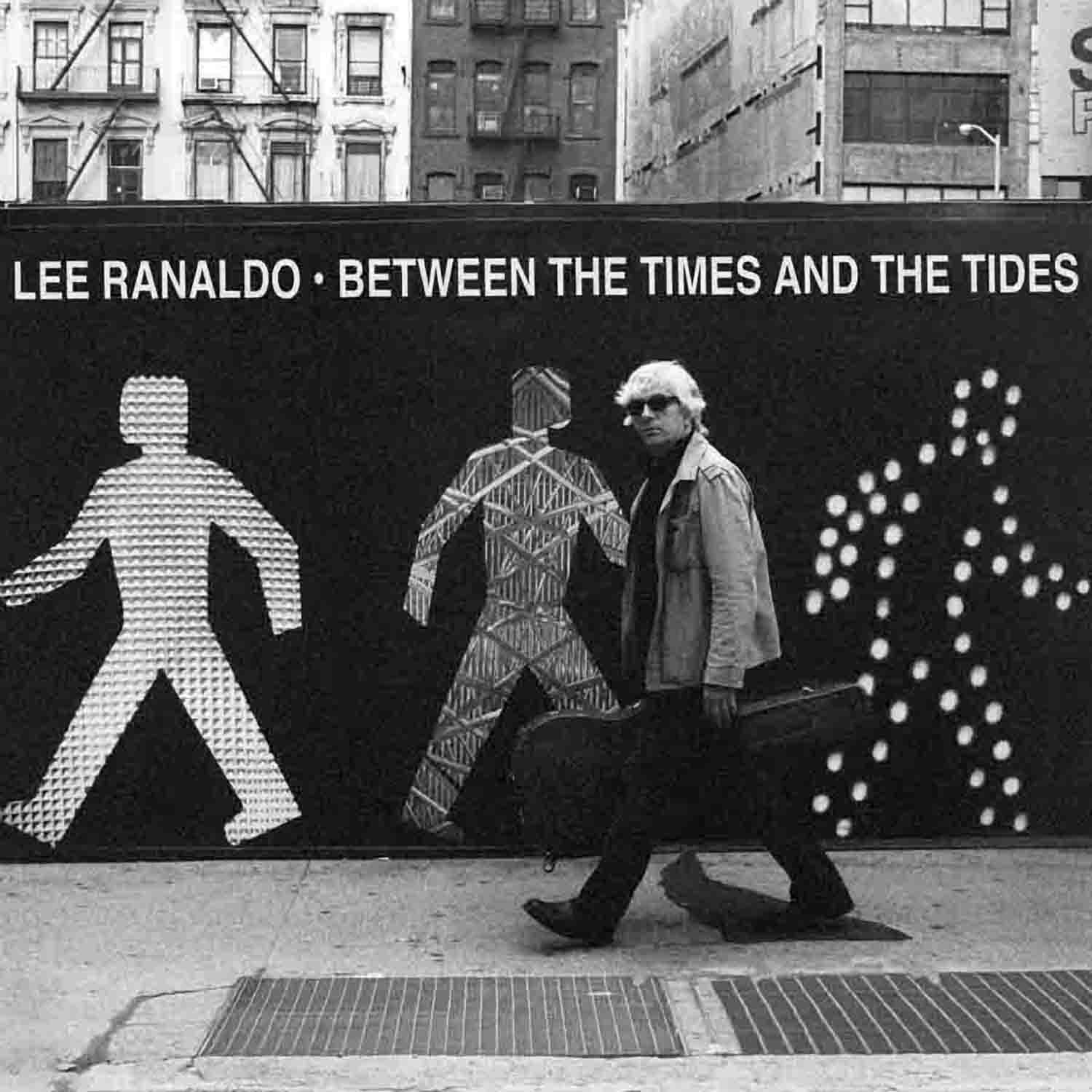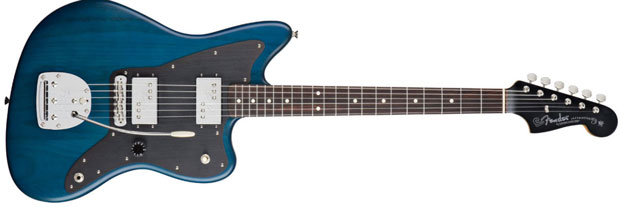Sonic Youth's Lee Ranaldo Discusses Fender's Lee Ranaldo and Thurston Moore Jazzmasters

Late last month, Sonic Youth guitarist Lee Ranaldo released Between The Times and The Tides, his first purely song-based, non-experimental solo outing, on Matador Records.
Besides its healthy dose of melodic, guitar-based rock, the disc features a bevy of faces from Sonic Youth's past and present -- assuming there is a present for the band; Steve Shelley plays drums, one-time SY drummer Bob Bert plays congas and frequent SY collaborator Jim O'Rourke contributes some bass.
But the real treat is the whirlwind of sound created by a killer three-guitarist lineup: Ranaldo, Alan Licht and everyone's favorite utility player, Nels Cline of Wilco.
Check out my complete interview with Ranaldo right here; we discuss the new album in detail, his guitars, pedals and amps, working with Cline and the status of Sonic Youth.
In the meantime, check out this bonus content -- a brief conversational detour about the effort that went into Fender's Lee Ranaldo and Thurston Moore Signature Jazzmasters.
GUITAR WORLD: I checked out musiciansfriend.com this morning and noticed the Fender Lee Ranaldo Signature Jazzmaster is labeled a "best seller" -- and the Thurston Moore model isn’t. What are your thoughts on that, and how involved were you and Thurston in the development of the guitars?
LEE RANALDO: We were super-involved, from top to bottom. We told Fender right away that we really wanted them to make guitars that would measure up to what we were actually using on stage. When that guitar came out of the box, I just put it in my rack and we were using it onstage almost immediately.
Get The Pick Newsletter
All the latest guitar news, interviews, lessons, reviews, deals and more, direct to your inbox!
We spent like a year and a half or more – two or three of our crew guys and me and Thurston, looking at different neck profiles. We have Jazzmasters from all these different years, and it really allowed us to look at them all and say, “What do I like about this one or that one?” Thurston found out he liked those Jumbo frets, and they sent us four or five or six different neck profiles to check out.
With mine, the deal with my Jazzblasters, as we call them, is the old vintage wide-range Fender humbucker pickups. They haven’t made those pickups the way they made them in the old days in quite a long time. They make a new version, but as one of the more critical websites said about them, “These pickups look like the old ones, but they don’t sound like the old ones.” And it was kinda true.
So they sent one of the earliest prototypes of my guitar with a set of those pickups in it, and they didn’t really sound very good. To Fender’s credit, they were willing to go back in and tweak them and try to make them better. So we went through a couple of iterations of that. Truth be told, they still don’t sound like the old ones, but Fender did a good job, considering the way they manufacture those pickups now. It’s a whole different internal process in terms of the magnets and what not. So that was cool of them.
They worked with us on what kind of pots we were using, pretty much top to bottom. We knew going in that our guitars weren’t going to end up being the least-expensive Jazzmasters on the rack. We didn’t want them to be the most expensive, but we wanted them to be high quality. They’re U.S.-made. We have a couple of J Mascis Jazzmasters, and they’re Japanese-made. They’re good, but they don’t have the quality ours have.
Maybe the reason mine sells more than Thurston’s is mine is more unusual with the humbucking pickups. Now when I go into a guitar store, I notice Fender is making all these Jazzmasters and Jaguars with big, silver-plated humbucking pickups. They never did that before. It’s kind of interesting.

In a few songs, namely “Shouts” and “Hammer Blows,” you sound a little like Michael Stipe of R.E.M. I've read some reviews of the album, and other writers have pointed that out. Thoughts?
Well, I think we have voices that are in a similar register, but I was surprised to see those comments. It didn’t occur to me too much – maybe a little bit on “Shouts.” Something about the chorus reminded me of R.E.M., and maybe I kind of anticipated that I’d hear that. We’re really old friends, and it’s a nice comparison because he has a really nice voice. But I was a little surprised to read those comparisons.
The new album initially reminded me of Sonic Youth's Sonic Nurse album [2004] because of the song-based material and the three guitars. It’s funny because when I finally read the new album's liner notes, I noticed Jim O’Rourke’s name, and he’s on Sonic Nurse too.
Yeah, Jim played on a few Sonic Youth records in that period, but that record in particular is very song-based, so yeah, that would be a good comparison.

Damian is Editor-in-Chief of Guitar World magazine. In past lives, he was GW’s managing editor and online managing editor. He's written liner notes for major-label releases, including Stevie Ray Vaughan's 'The Complete Epic Recordings Collection' (Sony Legacy) and has interviewed everyone from Yngwie Malmsteen to Kevin Bacon (with a few memorable Eric Clapton chats thrown into the mix). Damian, a former member of Brooklyn's The Gas House Gorillas, was the sole guitarist in Mister Neutron, a trio that toured the U.S. and released three albums. He now plays in two NYC-area bands.
“I suppose I felt that I deserved it for the amount of seriousness that I’d put into it. My head was huge!” “Clapton is God” graffiti made him a guitar legend when he was barely 20 – he says he was far from uncomfortable with the adulation at the time
“I was in a frenzy about it being trapped and burnt up. I knew I'd never be able to replace it”: After being pulled from the wreckage of a car crash, John Sykes ran back to his burning vehicle to save his beloved '76 Les Paul









